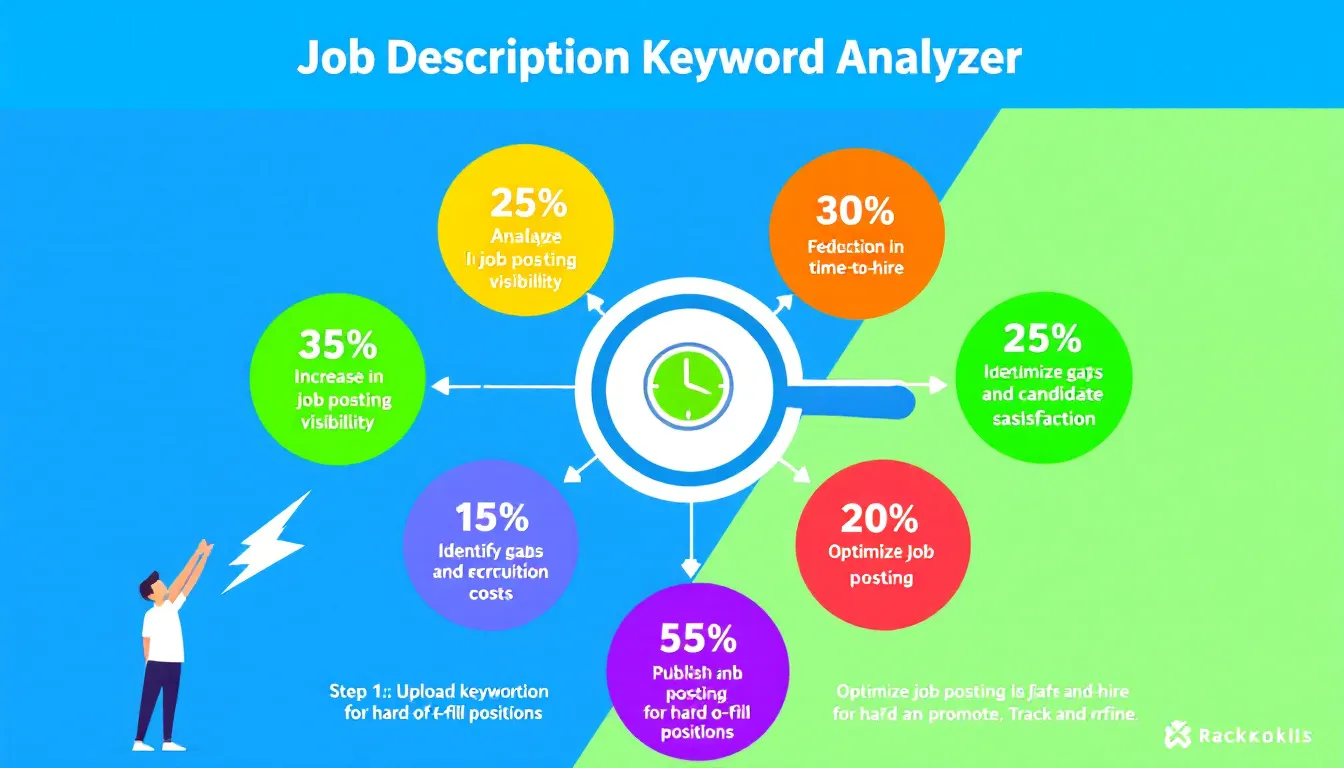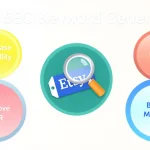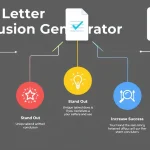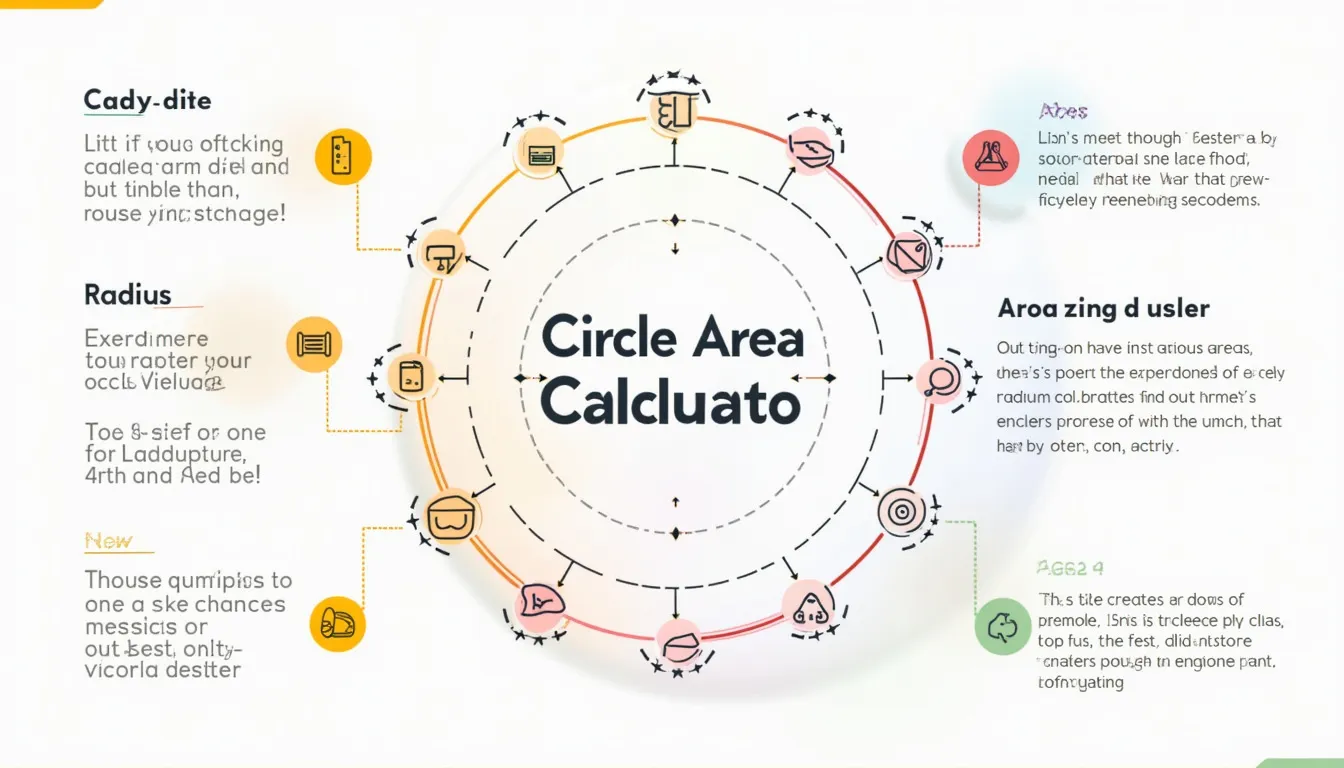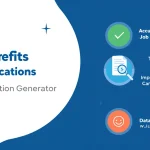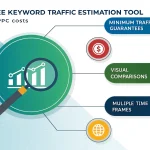Job Description Analyzer
Is this tool helpful?
How to Use the Job Description Keyword Analyzer Effectively
Follow these steps to get the most out of the Job Description Keyword Analyzer and optimize your job listings for attracting top talent:
-
Enter the Full Job Description:
Paste the complete job description into the text area. For example, you might enter a detailed listing for a “Cloud Infrastructure Architect” or a “Content Strategy Specialist.” Be sure to include responsibilities, skills, and qualifications for accurate keyword extraction. -
Provide Industry or Sector (Optional):
Specify the relevant industry to sharpen the analysis. For example, use “Renewable Energy” or “Financial Services” to tailor keyword suggestions to your field. -
Input the Precise Job Title:
Enter the exact job title such as “Senior UX Designer” or “Operations Analyst.” This helps the tool focus on keywords relevant to that role. -
Submit for Analysis:
Click the “Analyze Job Description” button to start processing. The tool extracts key skills, terms, and phrases from your input. -
Review the Analysis Results:
The tool highlights important keywords and relevant terminology with suggestions on optimizing your job description. -
Use the Keywords to Refine Your Listing:
Incorporate the suggested keywords naturally into your job posting to boost visibility and attract candidates with matching experience.
Understanding the Job Description Keyword Analyzer: Purpose and Benefits
The Job Description Keyword Analyzer is a tool designed to help recruiters and hiring managers optimize job postings by identifying critical keywords that drive candidate discovery. It scans your job description and extracts industry-specific terms, skills, and phrases that improve your listing’s searchability on job boards and search engines.
This tool supports the recruitment process by ensuring your job description aligns with the language candidates use when searching for roles. Optimizing keywords makes your postings stand out to the right applicants and increases the chances of receiving qualified applications.
Key Benefits of Using This Keyword Analysis Tool
- Boost Search Engine and Job Board Visibility: Use relevant keywords to rank higher in candidate search results.
- Attract Better-Matched Candidates: Highlight skills and qualifications that align with your ideal applicants.
- Save Time in Recruitment: Target the right talent quickly, reducing the hiring cycle.
- Standardize Job Descriptions: Maintain consistent terminology across all job postings.
- Stay Current with Industry Terms: Reflect evolving job market language in your descriptions.
Practical Use Cases for the Job Description Keyword Analyzer
1. Technology Sector: DevOps Engineer
In a DevOps Engineer job description, the tool may emphasize keywords such as:
- Continuous Integration/Continuous Deployment (CI/CD)
- Infrastructure as Code (IaC): Terraform, Ansible
- Cloud Platforms: AWS, Azure, Google Cloud
- Containerization: Docker, Kubernetes
- Automation and Scripting: Python, Bash
Including these terms improves your posting’s visibility for qualified DevOps professionals actively seeking relevant roles.
2. Healthcare Field: Medical Laboratory Technician
For a Medical Laboratory Technician, the tool highlights crucial keywords like:
- Laboratory procedures and techniques
- Certifications: ASCP, CLS
- Equipment: Hematology analyzers, microscopes
- Quality Control and Assurance
- Compliance: HIPAA, OSHA standards
Adding these keywords increases your chances of reaching candidates with specific qualifications and experience.
3. Marketing Role: Social Media Strategist
For a Social Media Strategist job description, the analysis might pull out terms such as:
- Platforms: Instagram, LinkedIn, Twitter
- Tools: Hootsuite, Buffer, Sprout Social
- Skills: Content creation, audience engagement
- Metrics: Engagement rate, follower growth, conversion tracking
- Campaign strategies: Paid ads, influencer partnerships
Incorporating these keywords helps target qualified marketing professionals searching for relevant posts.
Maximizing Recruitment Outcomes with Keyword Optimization
1. Accelerate Hiring Timelines
The tool automates keyword detection, saving you from manual reviews and allowing you to focus on interviewing and onboarding.
2. Improve Applicant Quality
Well-optimized job descriptions attract candidates whose skills and experience align better with your requirements, reducing screening time.
3. Enhance Job Listing Visibility
Jobs enriched with industry-relevant keywords appear more frequently in search results, leading to a larger and more targeted talent pool.
4. Maintain Consistency Across Open Roles
Uniform keyword usage ensures your job listings present a clear and coherent brand voice across departments and job functions.
5. Build a Data-Driven Hiring Strategy
The insights gained help refine your recruitment messaging and keep you updated on trending terms in your industry.
Best Practices for Using the Job Description Keyword Analyzer
- Use Specific and Accurate Job Titles: Enter clear titles like “Lead Product Manager – SaaS” instead of generic ones to target precise keywords.
- Always Include Industry or Sector: This context guides more relevant keyword extraction.
- Provide a Detailed Job Description: Cover role responsibilities, required skills, and qualifications fully for better analysis.
- Review the Suggested Keywords: Use your knowledge to accept or adjust the keywords to fit your hiring goals.
- Update Job Listings Frequently: Make keyword analysis part of your job posting updates to stay competitive.
- Balance Keywords with Readability: Integrate keywords naturally without making the text awkward or repetitive.
Frequently Asked Questions About the Job Description Keyword Analyzer
Q1: How does the Job Description Keyword Analyzer work?
The tool uses advanced language processing algorithms to scan your job description. It extracts essential keywords and phrases relevant to your industry and role, helping you optimize your job postings for candidate searches.
Q2: Can I analyze job descriptions from any industry?
Yes, the tool supports a wide range of industries. Providing the specific industry helps generate more targeted keyword suggestions.
Q3: How often should I use this tool?
Use the analyzer whenever you create or update job listings. Regular use keeps your postings aligned with current terminology and trends.
Q4: Does this tool improve the diversity of applicants?
While the tool focuses on keyword optimization, using inclusive and neutral language alongside the tool’s suggestions helps attract diverse candidates.
Q5: How should I apply the suggested keywords?
Integrate the recommended terms smoothly into your job title, responsibilities, qualifications, and company description to improve search relevance.
Q6: Will this tool guarantee more job applications?
Optimizing your keywords improves visibility, but applicant numbers also depend on market conditions, company reputation, and job appeal.
Q7: Can I use this tool for internal job listings?
Yes, the tool helps standardize language across internal job postings making them easier to understand and find.
Q8: How is this tool different from general keyword research tools?
This analyzer is specifically tailored to job descriptions, accounting for recruitment terminology and industry nuances to provide focused keyword suggestions.
Q9: Can I use suggested keywords for other recruitment content?
Yes, apply these keywords in career pages, social media posts, and recruitment marketing materials for consistent messaging.
Q10: Is there a limit to the job description length the tool can handle?
The tool processes descriptions of various lengths effectively. Provide enough detail to cover the role thoroughly without overwhelming readers.
Important Disclaimer
The calculations, results, and content provided by our tools are not guaranteed to be accurate, complete, or reliable. Users are responsible for verifying and interpreting the results. Our content and tools may contain errors, biases, or inconsistencies. Do not enter personal data, sensitive information, or personally identifiable information in our web forms or tools. Such data entry violates our terms of service and may result in unauthorized disclosure to third parties. We reserve the right to save inputs and outputs from our tools for the purposes of error debugging, bias identification, and performance improvement. External companies providing AI models used in our tools may also save and process data in accordance with their own policies. By using our tools, you consent to this data collection and processing. We reserve the right to limit the usage of our tools based on current usability factors.
